As much as we all handle barbells, kettle bells, medicine balls, rings and perform handstands, pull-ups, push-ups, muscle-ups and rowing, it’s no wonder our wrist hurt every now and then. I frequently hear complaints of wrist pain that lingers for weeks and even months. Sometimes, I hate to admit it, but the only advice I have for the athlete is to stop placing the wrist under heavy and repetitive loads until it heals. Wrist pain can have a myriad of etiologies. The wrist is a complex, multi-jointed structure with proximal and distal articulations, tendons, ligaments, vascular and fascial tissues.
To better understand why wrist pain exists, we need to understand the basic anatomy and functions of the wrist joints.
ANATOMY
From above the wrist crease to the carpometacarpal joints there are 14 different bones and numerous articulations. The wrist is proximally bounded by the articulation of the ends of the radius and ulna bones to form the distal radio-ulnar joint. This joint is supported by surrounding ligaments, tendons and a thick fascial membrane known as the interosseous membrane and retinaculum. There are also several smaller ligaments which tie the radius and ulna to the proximal row of the carpal bones and to each other. Extrinsic tendons of the forearm muscles also cross the wrist joint at this region to provide support. So, it is the forearm muscle tendons that provide most of the active stabilization support of the wrist and the ligaments provide the passive support of the wrist.
In the center of the wrist joint are 7 small multi-articulate bones known as the carpal bones. These bones serve to provide the mobility and stability of the wrist. They are attached together with a web like ligamentous complex known generally as the dorsal and velar(palmar) ligaments. These ligaments are crucial to wrist stability and health. There are 3 proximal, 1 lateral, and 3 distal carpal bones. These bones have several different surfaces which articulate with each other. To put it simply, they all work together to provide the needed mobility while not sacrificing stability. When loaded and in proper positioning, they become extremely stable. But just as any joint/joints, when they are placed in extreme ranges of flexion and extension and with the load fulcrum far from the point of contact, bad stuff happens.
MOVEMENT
Movements at the wrist are identified as flexion, extension, pronation, supination, and ulnar/radial deviation. All of these movements in normal ranges are key to proper wrist position during lifting and body weight movements. These movements can be influenced by muscle, tendon, ligaments and learned movement patterns. The proximal mobility/stability of the elbow can also influence wrist movement quality. An example of these movements are pictured below.
PROPER GRIP/BAR PLACEMENT
When applying forces into the palm of the hand, consider that the distance from the point of contact to the wrist is the lever arm and the wrist is the fulcrum. Basic physics teaches us when the load gets farther from the fulcrum, the stress or torque applied at the fulcrum increases. In other words, the farther the bar or object is away from the wrist toward the fingers, the greater the stress at the wrist joint and subsequently the carpal bones. Why is this important? The carpal bones and their articulating surfaces are small. When the carpal bones are under heavy loads, the ligaments and cartilages are under tremendous stress. Injure the carpal bones or supporting ligaments and you’ve got problems. So, where you place the bar in the hand/palm is key to supporting wrist health. The load should be at the base of the hand and directly over the wrist. An example of improper and proper bar placement in the palm is shown below.
Obviously, for the picture above, the grip and bar have been set up for a press movement. The proper position for overhead pressing is easier to maintain than for a clean, OHS, or snatch. The press is, in general, a strength movement with controlled entry into the movement and better setup. The only way to insure that the bar is placed in the correct position in the palm is to grip the bar with the right approach. When gripping the bar, place the hand on top of the bar, elbows out, and the bar underneath the palm contacting the base of the pad of the palm and then coming through the web space of the thumb far below the first knuckle of the index finger. Then rotate the bar, not the wrist into extension, and bring the elbows under ready for pressing. By positioning the bar correctly, you will be promoting the strengthening of your wrists and protecting them from injury. It will seem awkward at first, but you will get used to it over time.
If positioning the bar for a clean, front squat, thruster or shoulder rack position, the bar naturally shifts out of the base of the palm and onto the fingers or even finger tips. But, this can be exaggerated if there is poor mobility in the kinetic chain. One of the statements that I use in the FORTIFY course is, “the body finds movement and gets it from where it wants it.” If an athlete lacks movement in the thoracic spine, shoulder, and elbow, the wrist can become the weak link. Lack of mobility anywhere in the chain of movement can affect joints and place stress loads that cause injury. Even if an athlete has ankle mobility issues, they can put a greater strain of the wrist in certain front rack squatting positions. After the clean is performed, re-positioning the bar prior to the jerk is needed to support the lift and center the load back over the wrist. Unfortunately, when large loads are applied at extreme ranges of motion (such as in most movements in CrossFit and weightlifting – clean, jerk, snatch, thrusters, OHS, etc…), the wrist joints are at risk. Our goal during lifting is to use proper grip position as often as possible so that when we perform WOD’s or other movements that we know put the wrist at greater risk, the wrist has been strengthened and protected in other more controllable movement environments. Injury to the wrist can sometimes occur due to a single incidence, but it most commonly occurs due to cumulative trauma over time due to inappropriate volume or stress. So, our goal is to reduce the volume of stress “outside” of good posture. We know it happens, we just want to limit or reduce it!
Every athlete should have a movement screen prior to starting CF or weightlifting to identify joints or tissues that don’t meet normal ranges or the mobility needed for training. The problem with the wrist may not be with the wrist! The problem may be up the chain at the shoulder and elbow or thoracic spine. If you have wrist pain, have it evaluated by a PT, doctor or someone with mobility training. But also evaluate the adjacent joints and tissues for less obvious mobility issues that might be the actual cause of the wrist pain.
The most common of wrist injuries for CF or weightlifting athletes are sprains/strains of ligaments and tendons, dorsal impingement syndrome, tendinitis and cartilage tears/injuries.
WARM-UP / STRENGTHENING
Before any barbell or body weight movement that requires compression or traction loads on the wrist and forearm, warm-up needs to be performed. Warm-up should consist of simulating movements required for training under lower loads and forces and increasing blood flow to the forearm muscles and wrist joints.
Warm-up – rowing to increase forearm muscle blood flow, wrist circles, wrist stretches into ext/flex while in an all fours position on the ground, push-ups on palms and on fists, bar hangs, bar hangs with bar walks, barbell curls into ext/flex, barbell power cleans to front rack with hold at front rack position. Flossing of the forearm muscles and foam rolling the forearms can also increase mobility.
Strengthening exercises – dumbbell rotations, carries, fist planks, wrist circles with kettle bells/dumbbells, plate weight raises/lowers with rope, bar curls palm up/down, kettle bell clean/press with neutral wrist, pull-ups, ring dips, carries. The wrist and forearm muscles will naturally develop strengthening if training allows for gradual growth and increased stability.
PAIN IN THE WRIST
Ok, so let’s say you’ve been doing all the wrong things to those wrists, and now they hurt. Why do they hurt? Who knows? No, just joking. But seriously, an accurate exam by a medical doctor or doctor of PT is needed to first assess what structures are painful and then develop a treatment program. Unfortunately, one of the best things you can do is STOP doing what is hurting them. I know, this is the last thing a CF or avid athlete wants to hear. But, many problems can be mitigated first by stopping the harmful activity and then treating and correcting the problem. The most common of problems for CF athletes do to the nature of our sport are wrist tendinitis, dorsal impingement syndrome(due to hyper-extension under loads), joint/ligament sprains/strains, and triangular cartilage tears. So, stop what’s hurting, see a doctor, use ice/heat as needed (If acute, ice/heat contrast and gentle mobility work. If chronic, heat and mobility work). Avoid heavy loads until you can perform body weight loading without pain and then gradually start loading again progressively but not all at once.
Rules for Wrist Health
Keep the load over the base of the hand or in the palm but not over the palm side of the knuckle joints or finger tips
Grip the bar correctly with an oblique or palmar crease angle (it all starts with the grip!)
Avoid heavy or repetitious loads at the extreme end ranges of wrist mobility until adequate mobility is gained in the wrist, elbows, shoulders and thoracic spine and even then be careful. Gradually build up to heavier loads
If it “hurts” stop the lift or movement
If you lack mobility up the chain, fix it! Poor mobility above the wrist in the elbow, shoulder or thoracic spine has to be addressed. Don’t look at the wrist always as the problem, look at all joints/tissues in the chain
When performing basic barbell movements and whenever possible use proper grip position
Focus on forearm muscle strength for better wrist health
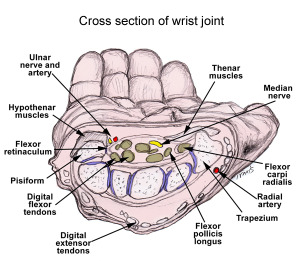
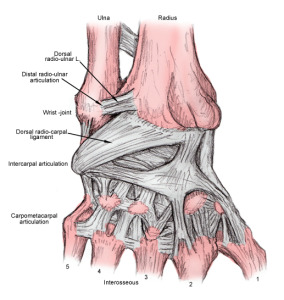
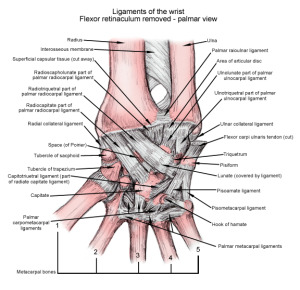
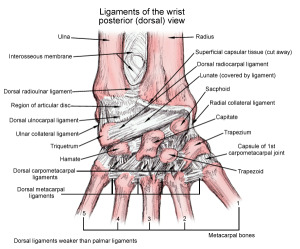
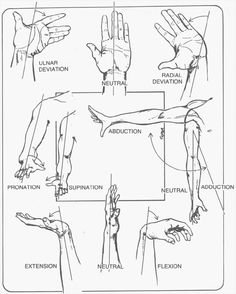
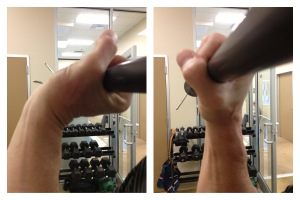
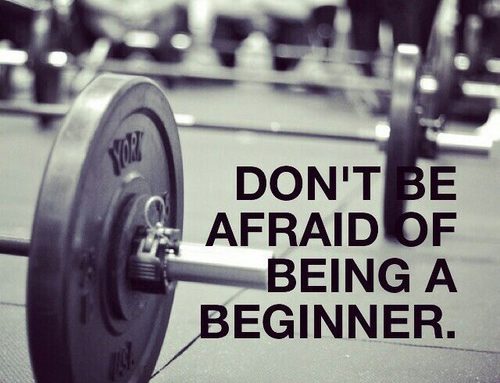
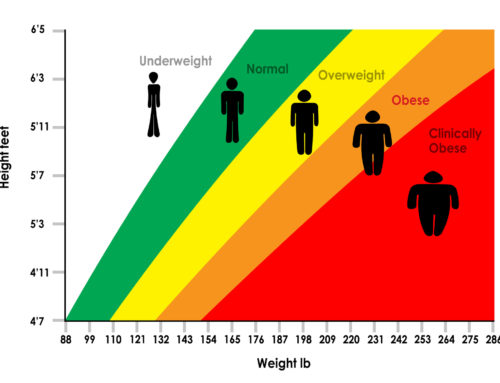
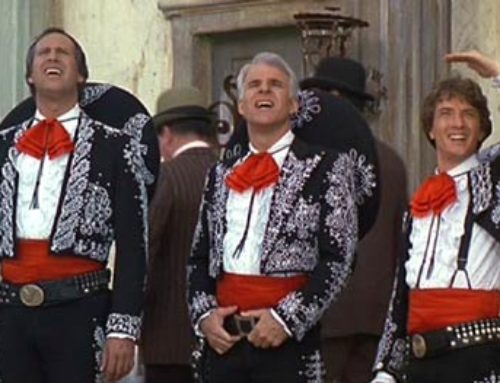

Leave A Comment